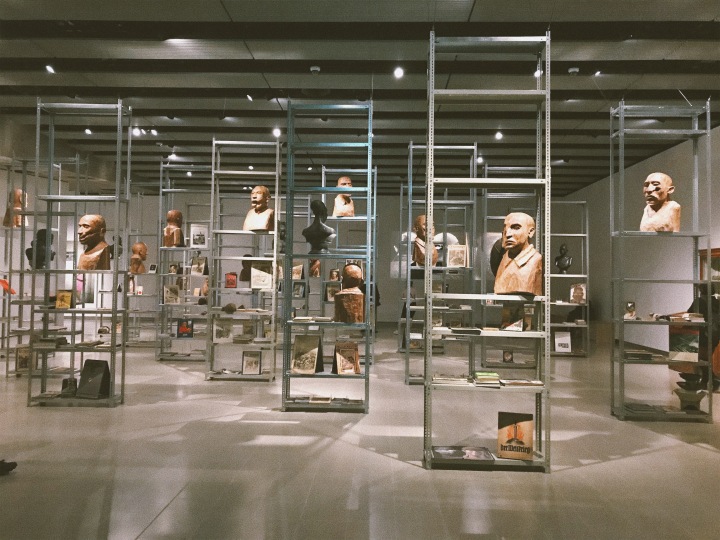There is a strong connection between art and emotion. Isn’t art’s main goal to evoke emotions? Feelings of beauty, anger, grief, reflection, joy? At the Hayward Gallery, an exhibition about emotion is taking place, but it’s not as straightforward as this might sound.
In this exhibition, Kader Attia: The Museum of Emotion, visitors can experience the different way the artist provokes to create “a real, fundamental dialogue” about the world we live in. As an artist and activist, from different angles, Kader Attia challenges our everyday conditions living in colonialism’s heritage. Attia (1970) grew up in Paris and in Algeria, spent several years in Congo and in South America and now lives and works in Berlin and Algiers. The experience with these different cultures, affected by colonialism, their multicultural societies and trading traditions, influences Attia’s artistic practice.
The artist works in many different media, from photography to moving image and from sculpture to enormous installations to create incredible thought-provoking works. The Hayward exhibition starts off with works that reflect upon the colonial relationship between Paris’ social housing projects, called Banlieues, and its architecture, the exhibition directly makes clear its political undertone. In a recent work La Tour Robespierre (2018), the artist shows how an endless repetition of grey modernist buildings, and reveals how these social housing blocks are actually built around principles of surveillance and control. The wall text in the room explains that these principles are similar to those used to subdue colonial populations. By drawing attention to the similarities, the artist provokes people to reflect upon the ramifications of the use the same tools from a colonial past for social housing project.
Countless intimate portraits of Algerian transgender sex workers in Paris are presented in the second room. He captured snapshots of these women experiencing everyday moments, someone sitting on a couch, someone taking a drag of a cigarette, fooling around. These are moments of elation in a life that is predominantly precarious. This installation of photographs is faced by another photographic installation called The Body’s Legacies, Pt. 2: The Postcolonial Body (2018), It’s a mix of Aretha Franklin, Maria Callas, Billie Holiday, and strangely Hitler, Mussolini, Saddam Hussein. A mishmash of singers and politicians, famous for their powerful and effective delivery. Showcasing how emotions play a leading role in our lives, all of our lives, Attia makes us consider how and whether emotions can be put to use as a way of healing rather than create conflict. But why deals with this in a museum? It makes us contemplate on what role a museum plays in this process. Is looking at art going to make us better people? Make us more aware of the consequences of our emotions?
Most persuasive, according to me, is his work that deals with the politics of Western museography. A quick history lesson of the origins of the art museum might be useful in understanding his approach. The first art museum is the Louvre, it was established after the Bastille was stormed, toutes les têtes ont été coupées, and a republic was established. The Louvre became the place for the people to admire the portraits of the rich and famous which heads were chopped off.
These beautiful objects, which were previously used to serve a function: for religious rituals, to decorate a house or manifesting wealth, were stripped of their function and presented as objects of pure contemplation, divided into categories according to time, school or style. More importantly, around the same time, ethnographic museums were established in Europe and North America. Highly imprinted by colonialism, showing the colonial objects they plundered. Objects created by European artists fall under the label art, placed on a plinth or frame and deserve contemplation. Robbed objects created by the people from a colonial empire were artefacts, used to show “‘primitive’ elements, the exotica” to European visitors. Attia uses these historical facts and undermines it by placing an art historical modernist show pony: Edvard Munch’s The Scream and a sick person’s mask stemming from West Africa’s, showing a formal link.
Visitors are swayed to unpack a lot of signification in Attia’s work, it shows colonialism is not ancient history, we are living in its legacy. This compelling exhibition is a must visit.
Kader Attia’s first UK survey exhibition The Museum of Emotion is on view until May 6th, 2019. For more information, click here.







